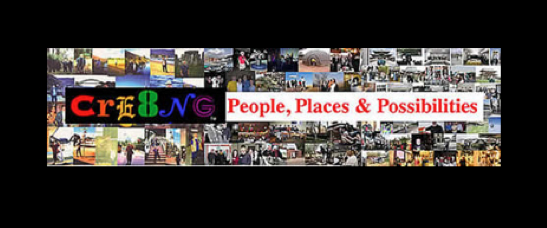1 + 1 = more than 2
But we can't allow 25 different answers to the same question in our classrooms!
For too many years, except for a few when John Dewey and his work was popular, except during the 60's when creativity was a "hot" topic, except in a few "enlightened" classrooms, this is the refrain of too many classroom teachers and even college professors.
Allowing is not the issue. Teaching, encouraging, challenging, stretching are the issues.
Easiest way to have 25 or whatever number of student answers is to ask open-ended questions (reality questions). Closed-ended questions nearly demand finite, very specific regurgitated answers from students. Too often students try to guess what the teacher has in his or her head instead of trying to think out or up an answer of their own.
Here is an 8-Step procedure that may help students of all ages learn to generate, create or discover their own unique answers instead of always fighting to guess the "teacher's answer". While they are generating discovering, inventing, creating their own answers they will learn many principles from which to learn much more. They may even learn something their teachers haven't learned yet or even they may discover a never before discovered or observed "breakthrough" and in turn teach it to others.
Step One
Teach basic concept of addition 1 + 1 = 2 First begin with objects to teach the primary mathematics concept or process behind addition.
Step Two
Encourage students to find their own examples that illustrate or depict (possibly even prove) that 1 + 1 = 2. By proving it to themselves they will create significant memories to rely on in the future.
Step Three
Provide examples of when 1 + 1 does not only equal 2. For example one male fly and one female fly if left alone long enough will produce many more than 2. You might also use paint or other color liquids or substances. One quantity of red paint added to an equal quantity of blue will produce something new, purple paint. Add two separate chemicals that produce a new compound or mixture. Using color photographic cells add green and red and you get black.
Step Four
Assign the students the task to discover as many ways to demonstrate that 1 + 1 does not always equal two. By matching them in pairs you might also teach the effects of synergy (1+1=?) when you add one person's ideas to another person's ideas.
Step Five
Search for learnings. Such as why does 1 + 1 = 2 But one orange and one knife might equal many things. One key is to let the students (no matter what age) to discover what they have learned. The teacher or trainer can always add other learning points after the students have completely listed their own. You might even do this over a few days to over a week to let them "sleep on it" for more learnings.
Step Six
Seek practical, useful and fun ways that knowing 1 + 1 = 2 is valuable.
Step Seven
Seek practical, useful and fun ways that knowing that one of something plus one of something else may not always equal 2 of something is valuable.
Step Eight
In an on-going fashion continually demonstrate that useful PRINCIPLES can be exacting and finite,whereas REALITY often is varied to infinite in possibilities.
We need to teach beyond simple recognition and pure memorization, regurgitation, replication, or application alone.
As Benjamin Bloom and other educational and learning theorists have said, we need to teach analysis, synthesis, discovery, creativity and evaluation. We need to teach students how to learn, to think, to solve problems to create. By we I mean everyone involved students and teachers.
Through learning that 1 + 1 can equal more than 2, future classes in art, mathematics, science, sociology, family planning, economics, sports, accounting will become easier to understand.
Perhaps we might learn that all subjects can teach us that 1 + 1 = ?. That by learning biology (1) and learning basket weaving (1) we might eventually combine these knowledges (add them) and discover (? or X), so much more.
Now your next challenge. In what ways might or how might 1 + 2 = 2?
For more information contact me...
Wandering Cre8ng Alan
alan@cre8ng.com
http://www.cre8ng.com

